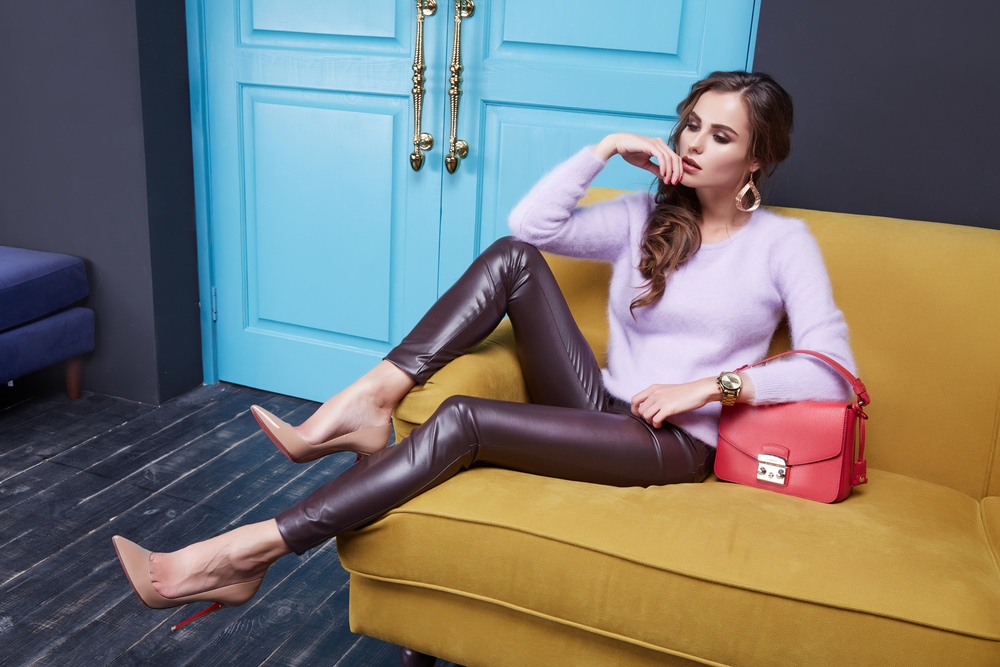
Being a model may seem like a life filled with glitz and glamour. With their flawless looks and perfect poses, models grace the pages of magazines, websites, and billboards, leaving us in awe of their beauty. But have you ever wondered what goes on behind the scenes? How do these models achieve those stunning shots that captivate our attention? Join us as we delve into the art of modelling and unveil the secrets behind the mesmerizing world of photoshoots.
1. The Art of PosingOne of the key elements in modeling is mastering the art of posing. A model's ability to convey emotions, attitude, and style through their body language is what captures the essence of a photograph. From the elegant extension of a leg to the subtle tilt of the head, every movement is carefully curated to create visually striking images.
2. The Importance of Expression
Beyond just physical poses, models must also master the art of facial expressions. Whether it be a smoldering gaze, a playful smile, or a fierce look, the expression adds depth and personality to the photograph. Models collaborate with photographers to bring a story to life, emulating a range of emotions that connect with the viewers.
3. Enhancing Beauty through Styling
While models are undoubtedly blessed with natural beauty, styling plays a crucial role in enhancing their features. Talented hair and makeup artists work their magic, highlighting the model's best features while maintaining the desired aesthetic of the shoot. Clothing stylists carefully select outfits that complement the overall concept, creating a harmonious visual narrative.
4. Lighting and Photography Techniques
Behind every breathtaking model shot is an exceptional photographer who understands the art of lighting. Skillfully manipulating natural or artificial light sources, photographers create a specific mood and ambiance that enhances the model's features and the overall composition. Various photography techniques, such as using different lenses or experimenting with angles, bring a unique perspective to each photograph.
5. Professionalism and Adaptability
Contrary to popular belief, modeling is not all about striking a pose and looking pretty. Behind the scenes, models need to possess great professionalism and adaptability. They must be punctual, patient, and able to take direction from the creative team. The ability to adapt to different environments, work alongside diverse teams, and remain composed under pressure are essential traits for a successful modeling career.
6. The Role of Post-Production
In the age of digital photography, post-production techniques have become an integral part of the modeling industry. Editing software allows photographers to enhance colors, adjust lighting, and refine the overall aesthetic of the photograph. Models themselves may also retouch certain aspects of their appearance to ensure their best presentation. However, it is vital to find a balance between enhancing the image and maintaining authenticity.
7. Breaking Stereotypes and Promoting Diversity
As the fashion and modeling industries evolve, there is a growing emphasis on inclusivity and diversity. Models are breaking stereotypes, challenging beauty norms, and promoting body positivity. The concept of beauty is expanding, and models of all shapes, sizes, and ethnic backgrounds are being celebrated, allowing individuals from all walks of life to find representation and connect with the industry.
Frequently Asked Questions
Q1. How can someone become a model?A1. To become a model, it's essential to start building a portfolio of professional photographs. You can reach out to local photographers or attend open casting calls. Consider signing up with a reputable modeling agency that can guide you in your journey.
Q2. What are the physical requirements to become a model?
A2. While there are no strict physical requirements to become a model, different types of modeling may have specific criteria. However, confidence, charisma, and a unique look are often more important factors for success in the industry.
Q3. How do models maintain their physical appearance?
A3. Models prioritize their overall well-being by maintaining a healthy lifestyle, including regular exercise and a balanced diet. Skincare and hair care routines are also crucial for their upkeep.
Q4. Are modeling careers long-term or short-lived?
A4. Modeling careers vary for individuals. Some models have long and successful careers that span many years, while others may have shorter durations in the industry. It ultimately depends on an individual's opportunities, market demand, and personal goals.
Q5. Can anyone become a model, regardless of age?
A5. Absolutely! The modeling industry embraces all ages. From child modeling to mature models, there are opportunities available for individuals of every age group.
In conclusion, the art of modeling goes beyond mere beauty and requires a combination of technique, talent, and professionalism. From the carefully curated poses to the emotional expressions, models collaborate with photographers and creative teams to bring the captivating world of fashion to life. Behind every glitzy photoshoot, there is hard work, dedication, and a touch of magic that transforms a simple photograph into a piece of art.
Other useful resources
- https://www.planetmodelphoto.com/models/modeling/usa/charlotte/nc-north-carolina
- https://en.wikipedia.org/wiki/Modeling_agency
- https://en.wikipedia.org/wiki/Category:Models_by_modeling_agency
- https://www.planetmodelphoto.com/models/modeling/usa/wilmington/nc-north-carolina